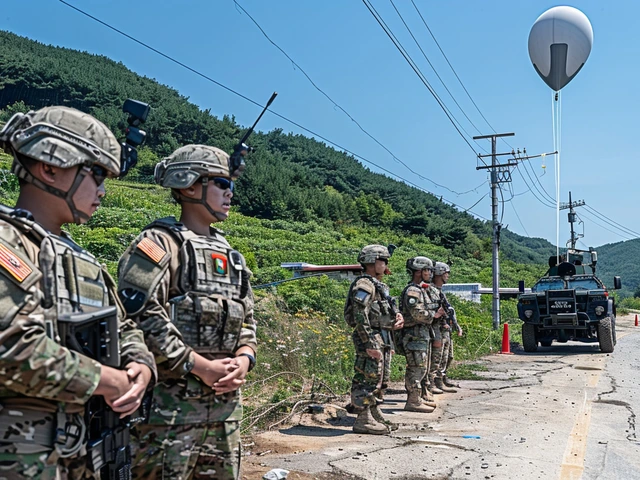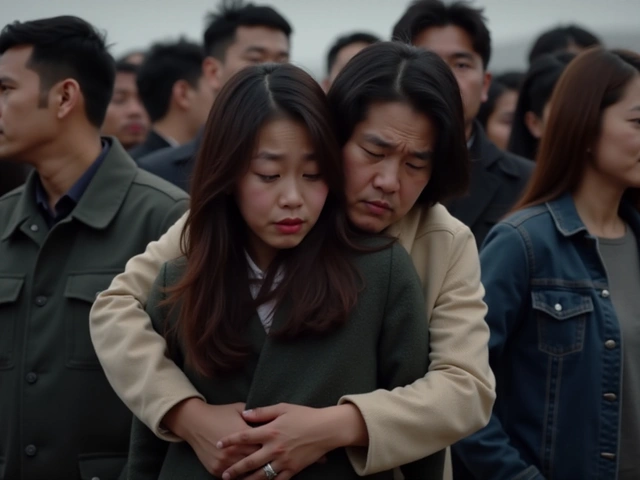A Devastating Aviation Incident in South Korea
The skies over South Korea turned grim as a Jeju Air Boeing 737-800 met a tragic end, resulting in one of the most harrowing incidents in recent aviation history. The airliner, intended to transport passengers across bustling regional routes, was engulfed in despair as 175 lives were lost from among its innocent travelers, along with four of its six dedicated crew members. The nation mourns, and the world watches, as investigators delve into the incident that unfolded in an unforeseen manner. This tragedy, now etched into the annals of aviation mishaps, took place under circumstances clouded by perilous warning signs that failed to halt its eventual course.
The Aircraft’s Role in Regional Connectivity
The ill-fated aircraft, a Boeing 737-800, was more than just a machine; it was a conduit for regional connectivity and an emblem of aviation’s ability to knit cultures and economies together. Ordered by Ryanair in 2009, this aircraft carried its legacy and responsibilities to Jeju Air in February 2017. It operated along high-frequency routes, touching destinations as diverse as Bangkok, Nagasaki, Taipei, Kota Kinabalu, and Beijing. Such routes are not mere flights; they are lifelines supporting regions globally interconnected via economy, tourism, and cultural exchange. Every flight undertaken by this aircraft was a mission to shrink distances and bridge gaps between peoples and nations.
From Routine to Disaster: A Flight Diverted
Two days prior to its tragic end, the aircraft deviated from a planned course, highlighting a potentially harrowing sign. On a routine journey from Jeju to Beijing, the aircraft hastily diverted to Incheon, South Korea’s main gateway to the world. This decision, seemingly precautionary at the time, now serves as a poignant footnote in the larger narrative of the eventual disaster which unfolded. At that moment, the aircraft continued its voyage to the Chinese capital, apparently restored--or so it seemed, to proceed with its routine service to the skies.
The Fateful Landing at Muan International Airport
The ominous sequence of tragic events reached its climax as the Jeju Air flight attempted a landing at Muan International Airport. It was no ordinary descent; it became a desperate bid for survival went awry. Skies perceived as clear concealed the fate that lay below—a runway that was meant to receive safely but instead witnessed a harrowing belly-landing attempt. This ungraceful landing swerved into an uncontrollable skid, leading the aircraft to cross boundaries it was not meant to breach, until its tragic halt at the runway’s end.
Bird Strike: An Indicator But Not a Verdict
Initial conjectures from analysts regarding this calamity circled around an alert of a bird strike, communicated by the pilot to air traffic controllers before declaring mayday. While the scenario depicted paints a picture of a dire confrontation with nature’s autonomous creatures that unpredictably share our skies, aviation experts urge caution in focusing exclusively on this angle. Bird strikes, though perilous, are not unprecedented and have even left worlds more worried than wounded in various instances. Thus, it’s imperative that this mechanical malfunction and human miscalculation be meticulously explored without allowing convenient scapegoats.
The Call for In-depth Investigations
The incident has cast an inevitable spotlight on the necessities of stringent safety protocols, enhanced responsiveness, and relentless pursuit of understanding to prevent future such occurrences. The urgency of inquiry now transcends borders as South Korea's transport department spearheads the endeavor to deconstruct, mesh together, and make sense of what truly unfolded. Global aviation bodies extend their hands poised to contribute expertise, upon which the aviation industry relies profoundly for an unbiased truth. Conclusions drawn from collective efforts will indeed serve as cornerstones for fortified futures in flight safety.
An Industry Under Scrutiny
Aviation stakeholders around the globe, ranging from manufacturing giants, regulatory bodies, and vigilant consumers, now all focus their collective glare upon the industry that holds dreams aloft. As each revelation comes to light in this ongoing investigation, questions and demands echo across international forums dedicated to aviation safety. Transparency, accountability, and, most importantly, improvements, bespoke of architects captivated by aerodynamics’ promises, are called to the frontlines, ensuring the sky remains a trusted expanse for aspiring globetrotters.
Reflections on the Human Connection
At the heart of these seemingly mechanical evaluations lies the undeniable truth of personal stories cut short and families grappling with loss immeasurable by statistics or charts. The gruesome reminders of fragility in our technologically intertwined world beckon us to consider not just aviation routes, but the human lives tethered to their elegant paths. Consoling grieving families and community support become as crucial as all technical endeavors seeking to shield future adventurers from uncertainty shrouding an otherwise invigorating journey through the skies.









HarDeep Randhawa
December 30, 2024 AT 22:24Bird strikes? Really, the media loves to blame nature!!!; but the real issue lies in pilot decision‑making-over‑reliance on automated alerts!!!; why are we so quick to point fingers at gulls when the aircraft’s maintenance log reads like a novel of neglect???; the statistics they quote are cherry‑picked, the narratives are sensationalized, and the public is fed a story that comforts them!!!; let’s stop the hysteria and examine the human factors!!!;
Nivedita Shukla
December 31, 2024 AT 02:06When we read about the loss of 175 souls, the weight of grief settles like a thick fog over our collective conscience. Each name, each family, becomes a silent echo in the corridors of memory, demanding more than cold technical jargon. The sky, once a symbol of limitless hope, now feels like a fragile veil that can tear at the slightest whisper of fate. We are drawn to the narrative of the bird strike, but perhaps it serves as a convenient mask for deeper systemic failures. In the theater of tragedy, the aircraft becomes a tragic protagonist, its metal heart beating in rhythm with the millions of journeys it once safely carried. Yet, within moments, that rhythm falters, and the script erupts into chaos, leaving us to question the reliability of our engineered safety nets. The relentless pursuit of efficiency in aviation has, at times, edged out the humility required to respect nature’s unpredictability. This incident forces us to confront the paradox of progress: how far can technology shield us before it loses its grounding in human prudence? Philosophically, we must ask whether our quest for ever‑faster connections erodes the very foundations of safety we celebrate. The emotional toll on the families, the silent prayers whispered at night, the void left in workplaces-all these are the invisible casualties of a crash that the headlines could never fully capture. Yet, amidst the sorrow, there is an unyielding resolve among investigators to peel back each layer, to honor the departed by seeking truth. The world watches, not merely as onlookers, but as participants in a shared quest for redemption. Let us remember that behind every statistic lies a story, a personal universe shattered in an instant. May the lessons learned become the pillars upon which future flights rest, and may the memory of those lost be a beacon guiding us toward a more compassionate sky.
Rahul Chavhan
December 31, 2024 AT 07:40The plane was a workhorse, flying routes we all rely on. It’s sad when something like this happens. We need to keep learning from every accident. Safety improvements save lives. Let’s hope the investigation is quick and thorough.
Joseph Prakash
December 31, 2024 AT 14:36Interesting how a bird can cause such drama 😮👍 the tech side is complex but the human side matters too 🌍
Arun 3D Creators
December 31, 2024 AT 18:46We stare at the wreckage and wonder about destiny and design; the metal beast fell because of a moment’s misstep, not because of gulls; it reminds us that control is an illusion, a temporary grace; the sky does not forgive, it merely watches.
RAVINDRA HARBALA
January 1, 2025 AT 01:43The data clearly shows that procedural compliance was lacking. Crew resource management failures are evident. This is not a "bird problem" but a training gap.
Vipul Kumar
January 1, 2025 AT 05:53Let’s remember that every aviation professional can learn from this. Mentors should emphasize checklist discipline and realistic scenario training. Together we can raise the safety culture.
Priyanka Ambardar
January 1, 2025 AT 11:26Our own aviation standards are stricter than theirs, period! 💪